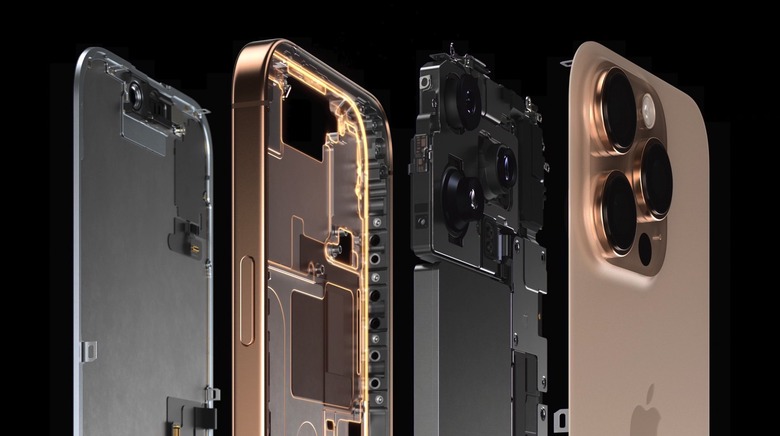First iPhone 16 Pro Drop Test Reveals The Downside To Ultra-Slim Bezels
If you just bought one of the four iPhone 16 models and you're wondering whether you really need a case, I wouldn't blame you. First of all, Apple says all four iPhone 16 models feature the latest-generation Ceramic Shied glass that's "two times tougher than any smartphone glass." Then there's the titanium frame on the iPhone 16 Pro and 16 Pro Max. The new iPhones should be more durable than ever, and some people might want to avoid using screen protectors and cases to enjoy the phones as they are.
The first iPhone 16 Pro drop tests are here, with good and bad news. Yes, the iPhone 16's front glass appears to be more durable. But it can still crack, depending on how the phone lands when it's dropped. But there's worse news, too. If the ultra-slim bezel is the point of impact, the iPhone 16 Pro or 16 Pro Max display might be killed instantly.
YouTuber AppleTrack went to Australia to be among the first to drop-test the handset. He performed the usual drops you see in videos like this. In short, he drops the handset from various heights to see how long the phone can survive.
AppleTrack also dropped a brand-new iPhone 15 Pro at the same time to compare the Ceramic Shield tech on both devices.
Watching the clip, I expected the front and back glass panels on both phones to eventually shatter. This almost always happens with these tests, as YouTubers also tend to exaggerate the drops. To be fair, no YouTubers use scientific tests in drop test videos.
I wasn't expecting the iPhone 16 Pro's screen to actually die on the fourth drop. Admittedly, it was a drop from at least 7 feet high. The phones fell on concrete, with the iPhone 16 Pro impacting the hard surface in the bottom right corner.
The titanium took another hit after scratching in the previous drops, and the screen got a minor crack that did not extend to the entire display. There was no spider-webbing, which is common with smartphone glass cracks.
However, while the iPhone 15 Pro display continued to work, the iPhone 16 was dead. The likely culprit is that ultra-slim bezel. That's where the iPhone 16 Pro landed. The impact was forceful enough to damage the display components under that bezel. That's what AppleTrack speculates, and it makes sense.
The YouTuber goes on to drop the iPhones from various angles and heights to show what they're capable of. The iPhone 16 Pro Ceramic Shield glass does seem to handle drops better than its predecessor, but the display is dead.
Separately, Allstate Protection Plans performed its routine drop test with the iPhone 16 Pro Max. The company uses a similar process for all its tests, which makes it a little more objective. It's not a human dropping the phone, but a robot.
The test involved dropping the handset from six feet on concrete. The iPhone 16 Pro Max display shattered and wasn't functional after one drop. The point of impact seems to be the bezel near the top right corner. The screen reportedly flickered white for about two minutes after going black, then went black for good.
The company says that haptic responses could still be felt from the power and camera buttons, suggesting that the phone still works, it just needs a new screen.
When dropped from the same height on the back, the iPhone 16 Pro Max did not sustain screen damage. It continued to work, but the rear glass was badly shattered.
The conclusion here is that you should invest in a screen protector that can help protect the bezels. You should also get a case to spare the rear glass and the titanium. Also, a case might help prevent the phone from landing on one of those bezels. Because yes, the iPhone 16 Pros will handle most drops with grace. But you cannot know when the stars align just right for a drop to be catastrophic.
If you want to use one of the iPhone 16 Pro models without protective equipment, you might want to invest in some sort of insurance, whether it's AppleCare+ or something else.
